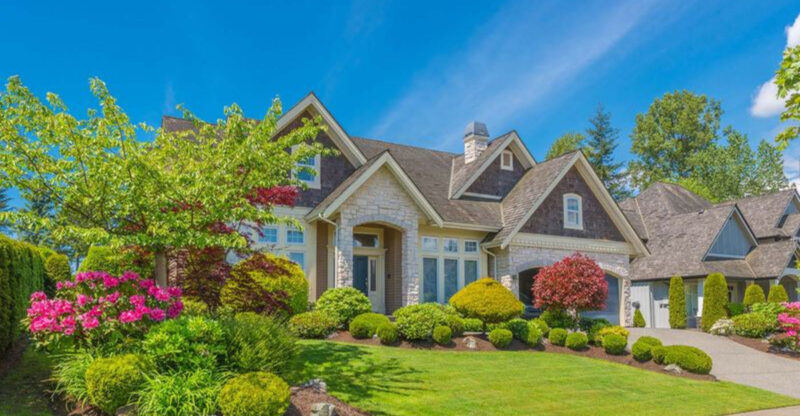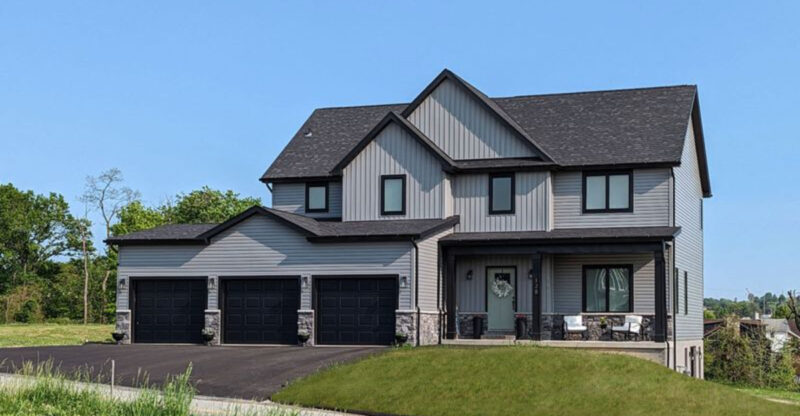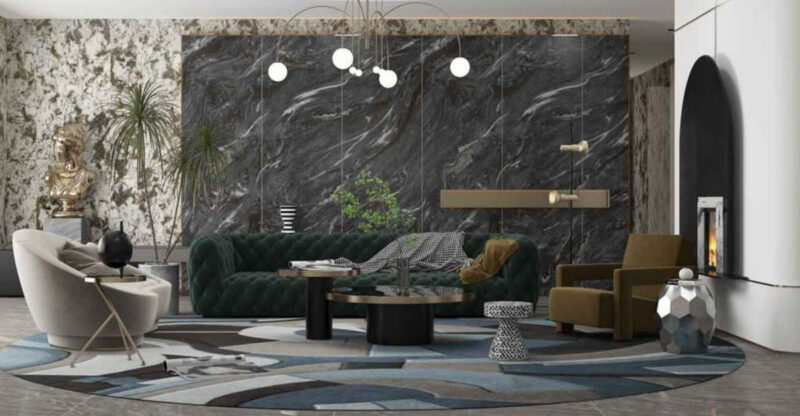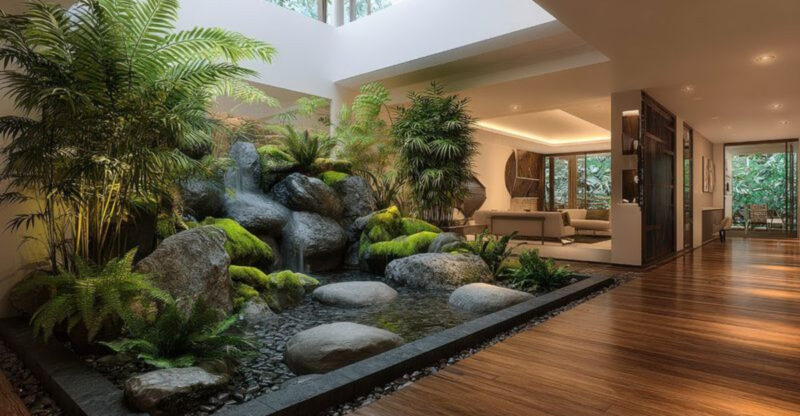31 Most Popular Home Trends From 1970s To Now

Our homes tell the story of changing tastes, technology, and lifestyles over the decades.
Since the 1970s, we’ve seen dramatic shifts in interior design preferences, from the bold and funky styles of the disco era to today’s tech-integrated living spaces.
Let’s take a walk through time and explore the most influential home design trends that have shaped our living spaces over the last five decades.
1. Open Floorplans
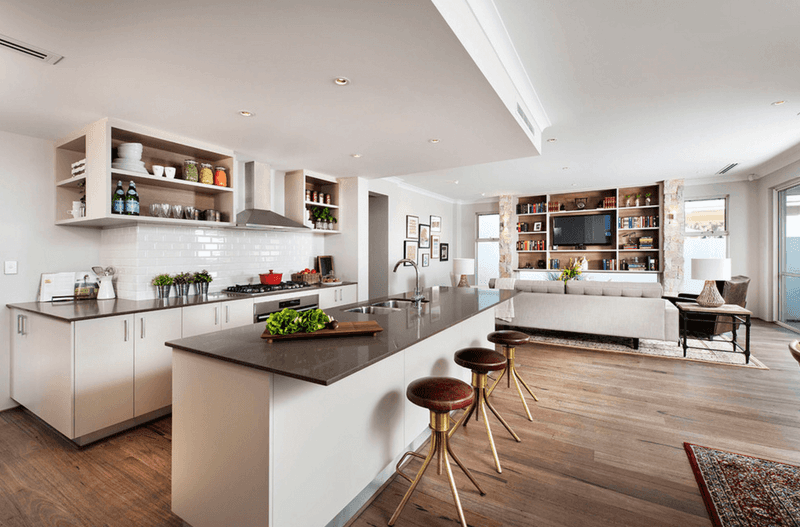
Remember when every room in a house had its own walls and door? Those days disappeared when open floorplans revolutionized home design in the late 1980s and 1990s.
Knocking down walls between kitchens, dining rooms, and living areas created multi-functional spaces that encouraged family togetherness. Parents could cook dinner while keeping an eye on kids doing homework at the dining table.
The airy, spacious feeling made even modest homes feel larger and more inviting. Light flowed freely from room to room, brightening interiors naturally. Though some homeowners now crave more defined spaces (especially after pandemic lockdowns), the open concept remains a dominant feature in modern homes, balancing communal living with strategic privacy zones.
2. Shag Carpets
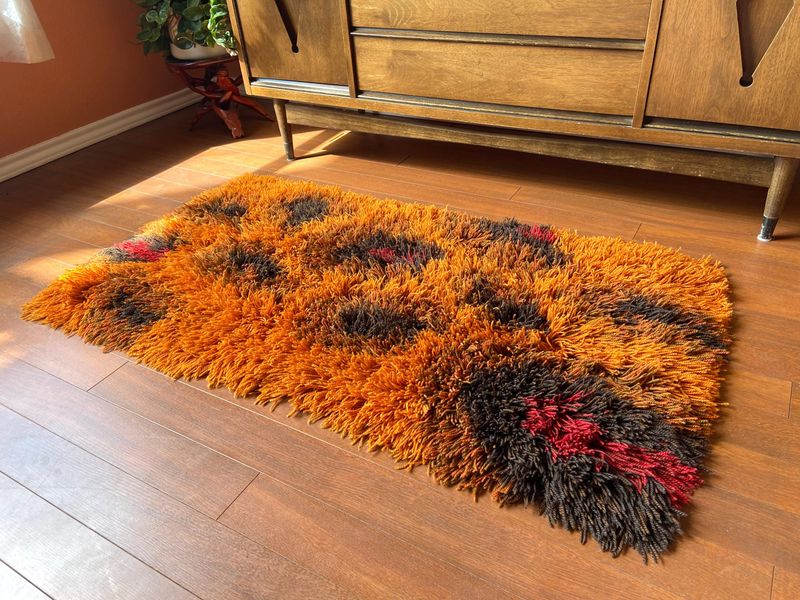
Nothing screams 1970s quite like a plush, deep-pile shag carpet! These ultra-soft floor coverings with their long, woolly fibers became the must-have home accessory, appearing in vibrant oranges, browns, and avocado greens across America.
Families would proudly rake their shag (yes, special rakes were sold just for this purpose) before company arrived. Comfort was king with these tactile treasures. Children would lie on them to watch TV, and adults enjoyed the cozy feeling underfoot during chilly evenings.
The deeper the pile, the more prestigious your carpet! While modern tastes largely abandoned shag by the 1980s, we’ve seen recent revivals with updated colors and improved materials that don’t trap quite as much dust as their predecessors.
3. Wood Paneling
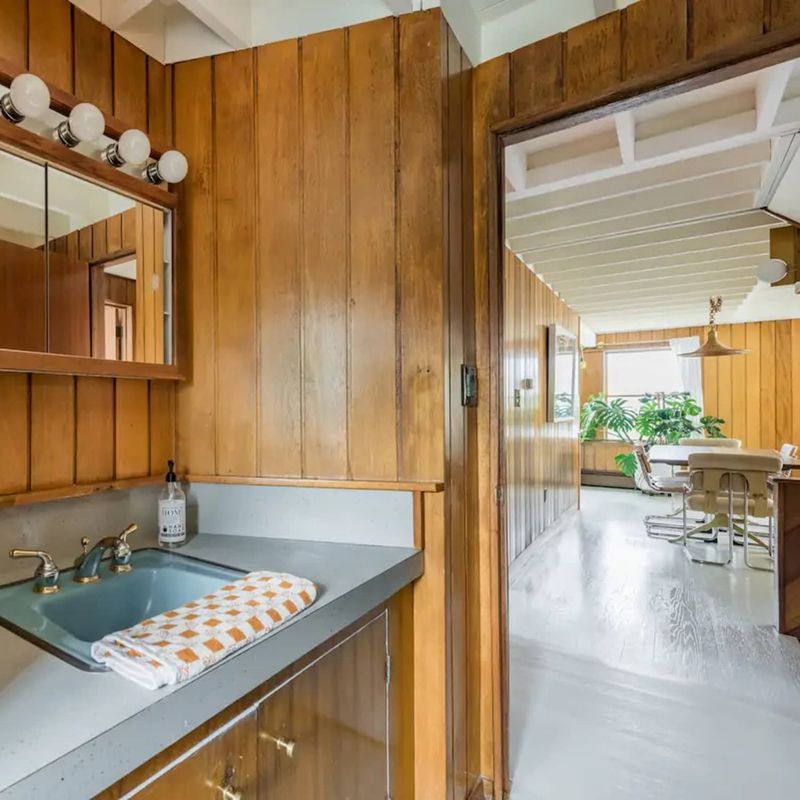
Dark wood paneling transformed countless basement rec rooms and living spaces throughout the 1970s. This affordable wall covering brought a rustic, cabin-like warmth to homes across America, often paired with matching wood furniture and brown or orange accessories.
Homeowners loved how easily it installed over existing walls and how it hid imperfections. The characteristic deep grooves and wood grain patterns created a distinctive look that defined the era. Many family photos from this period feature wood-paneled backdrops.
Though largely abandoned by the late 1980s in favor of lighter, brighter interiors, wood paneling has made a surprising comeback. Today’s versions feature lighter woods, selective accent walls, or painted panels that reference the textural appeal without the darkness.
4. Avocado Appliances
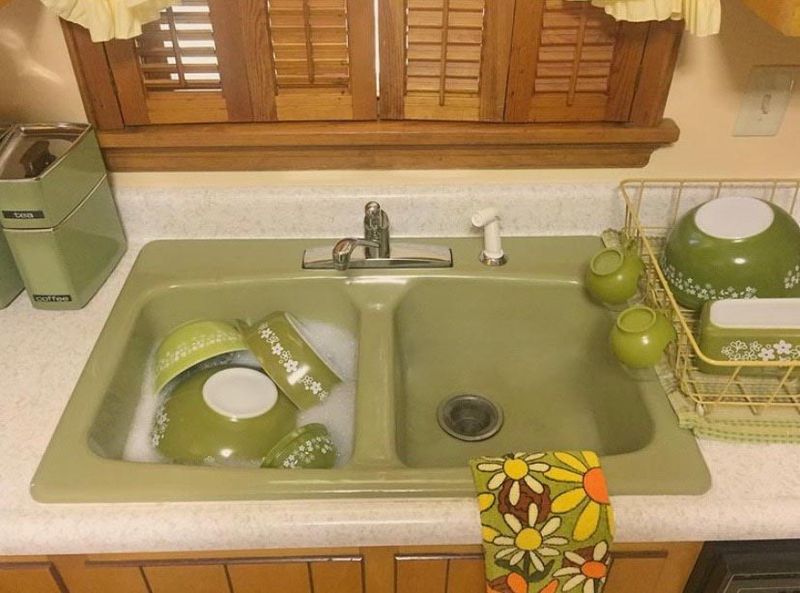
The kitchen revolution came in color during the 1970s! Avocado green refrigerators, stoves, and dishwashers replaced the sterile white appliances of previous decades. This earthy, military-inspired green (often alongside harvest gold and burnt orange) dominated kitchens across America.
Manufacturers marketed these colorful appliances as fashion statements for the home. Entire kitchen designs revolved around matching these distinctive hues with coordinating countertops, backsplashes, and even sink fixtures.
The look represented modern living and self-expression. While these colorful appliances faded from popularity by the early 1980s, they’ve become nostalgic icons of the era. Today, some specialty manufacturers offer retro-styled appliances in updated versions of these vintage colors for homeowners seeking a touch of 1970s flair.
5. Mirrored Walls
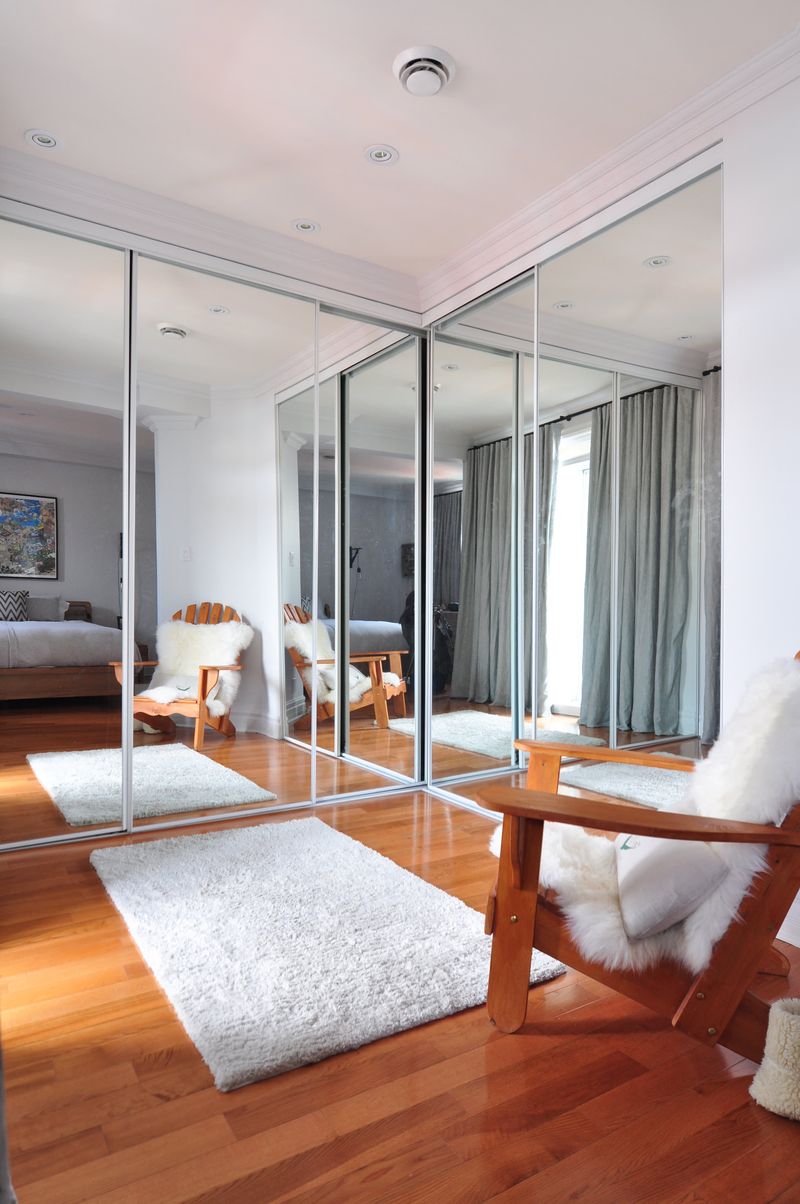
Disco-era homes embraced the glitz with floor-to-ceiling mirrored walls that transformed ordinary rooms into seemingly endless spaces. Homeowners installed these reflective surfaces in living rooms, bedrooms, and especially dining areas to create illusions of grandeur and light.
The practical benefits were numerous rooms instantly appeared twice their size, lighting was amplified, and spaces felt more dynamic. Designers often paired mirrored walls with crystal chandeliers and glass furniture for maximum sparkle.
Some even featured bronze or smoked glass variations for added sophistication. While the full mirrored wall fell out of favor by the mid-1980s (along with concerns about cleaning and cracking), the concept lives on in more restrained applications like mirrored backsplashes, furniture accents, and strategic placement to brighten dark corners.
6. Wallpaper Borders
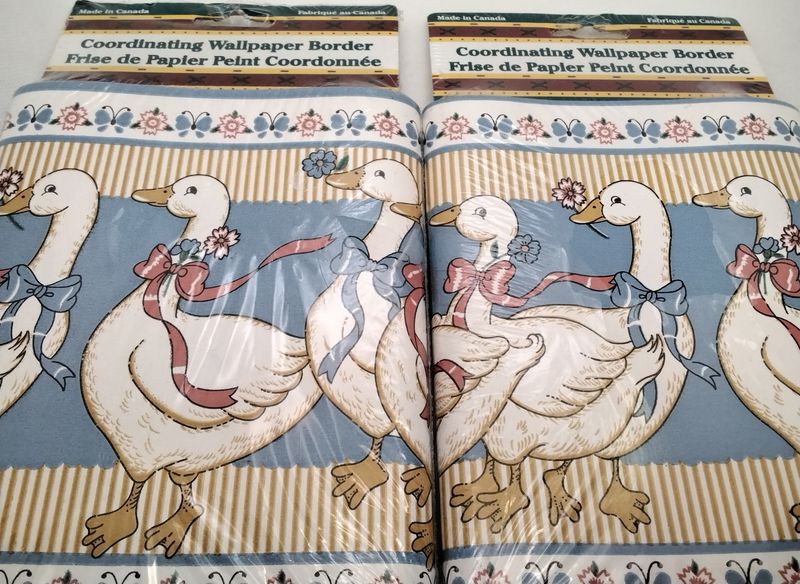
The 1980s and early 1990s saw wallpaper borders take over American homes with incredible popularity. These decorative strips ran along the tops of walls, just below ceilings, featuring everything from country geese and floral patterns to nautical themes and Victorian motifs.
Homeowners loved borders as an affordable way to add character without committing to full wallpaper. They defined spaces, unified color schemes, and added visual interest with minimal effort. DIY enthusiasts could easily install them over a weekend, making them perfect for quick room refreshes.
Though largely replaced by crown molding and paint techniques by the 2000s, wallpaper borders remain in design memory as quintessential 80s-90s decor. Some contemporary designers have reinterpreted the concept with more sophisticated patterns and placement in unexpected areas like chair rails or door frames.
7. Brick Accent Walls
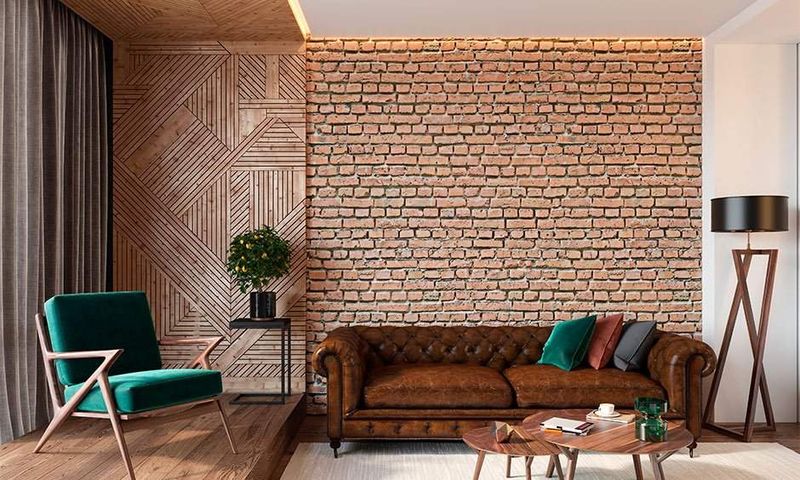
Exposed brick walls transitioned from industrial lofts to mainstream homes during the 1970s and 80s. Homeowners either uncovered existing brick or installed thin brick veneers to create rustic focal points in living rooms, kitchens, and even bedrooms.
The textural contrast of rough brick against smooth painted walls added depth and character. Decorators embraced the natural red-orange tones as a built-in color accent. Many homeowners displayed artwork, hanging plants, or mounted shelves on these distinctive surfaces to highlight their unique characteristics.
Brick accent walls have proven remarkably enduring across decades, evolving rather than disappearing. Contemporary applications include whitewashed or painted brick, herringbone patterns, and selective exposure rather than full walls, demonstrating how this trend continues to adapt to changing tastes.
8. Terrazzo Flooring
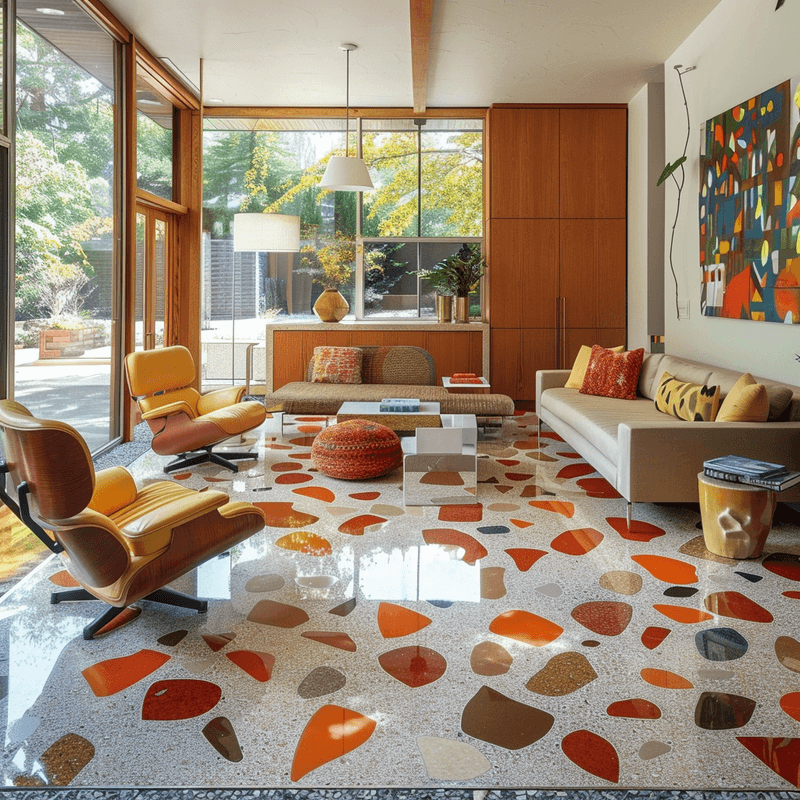
Terrazzo’s distinctive speckled appearance graced countless commercial buildings and upscale homes from the 1970s through the 1980s. This composite material, made from chips of marble, quartz, granite, or glass set in concrete or resin, offered incredible durability with decorative flair.
Families appreciated how terrazzo withstood heavy foot traffic while maintaining its polished good looks. The customizable nature allowed for personalized color combinations and pattern designs. In warmer climates like Florida, terrazzo provided cool surfaces underfoot during hot summers.
After falling from favor in the 1990s, terrazzo has experienced a remarkable renaissance in recent years. Today’s versions appear in countertops, furniture, and even smaller accessories like planters and coasters, demonstrating how this practical material continues to find new applications in contemporary design.
9. Sunken Living Rooms
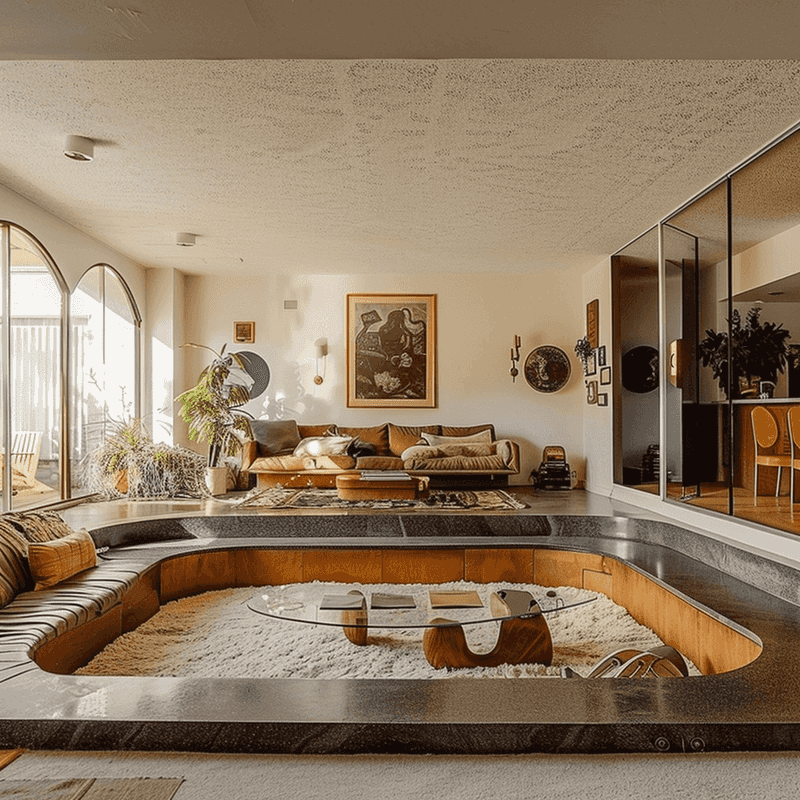
Step down into luxury! Sunken living rooms created dramatic architectural interest in homes throughout the 1970s. These conversation pits, typically lowered by one or two steps from the main floor level, created intimate gathering spaces that physically separated social areas from the rest of the home.
Homeowners often enhanced these sunken spaces with plush shag carpeting, built-in seating, and central fireplaces. The design encouraged face-to-face interaction in an era before smartphones and constant digital distractions.
Many featured circular or U-shaped sectional sofas that further emphasized the communal nature of the space. While largely eliminated during home renovations of the 1990s due to accessibility concerns and changing tastes, elements of this trend have returned in contemporary “conversation pit” concepts and multi-level living spaces in high-end custom homes.
10. Exposed Beams
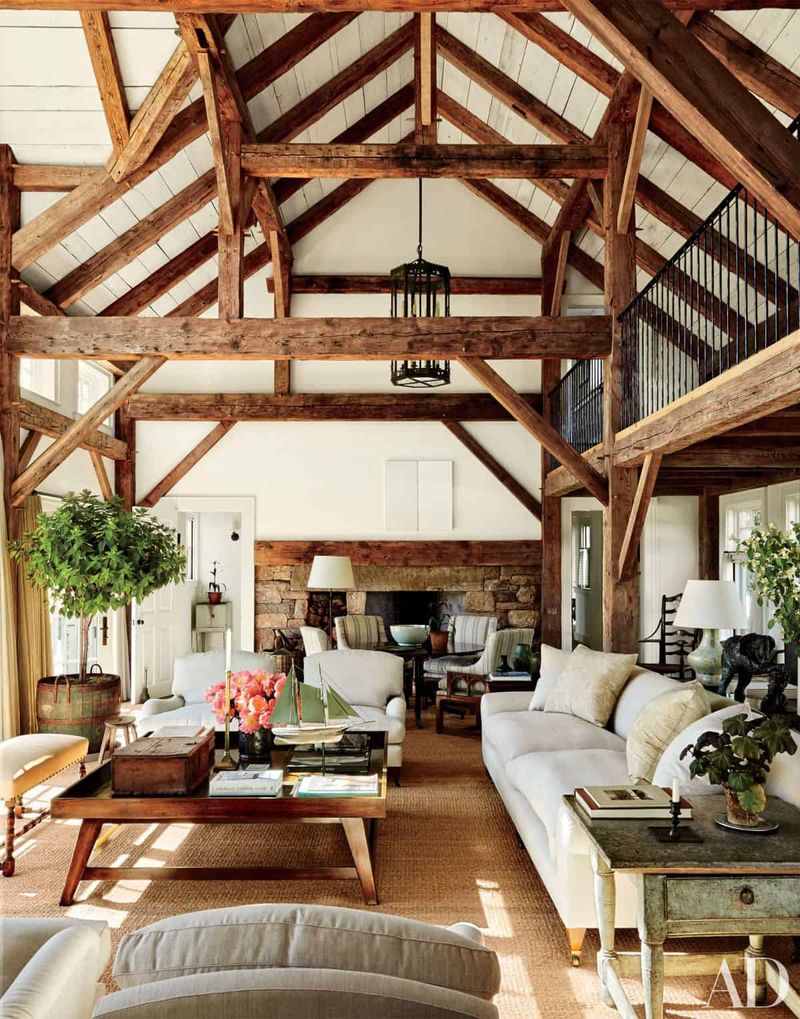
Rustic charm entered mainstream homes in the 1970s when designers began showcasing structural ceiling beams rather than hiding them. These architectural elements, whether structural or decorative, added visual interest to otherwise plain ceilings and created a sense of authenticity and craftsmanship.
Dark-stained wooden beams contrasted beautifully against white ceilings, drawing the eye upward and making spaces feel more substantial. Homeowners embraced the country farmhouse aesthetic they provided, often pairing them with other natural elements like stone fireplaces and hardwood floors for a cohesive look.
Unlike many trends, exposed beams never truly disappeared from design consciousness. Today they appear in various forms from reclaimed antique timbers to lightweight faux beams made from foam or polyurethane that deliver the look without structural requirements.
11. Velvet Upholstery
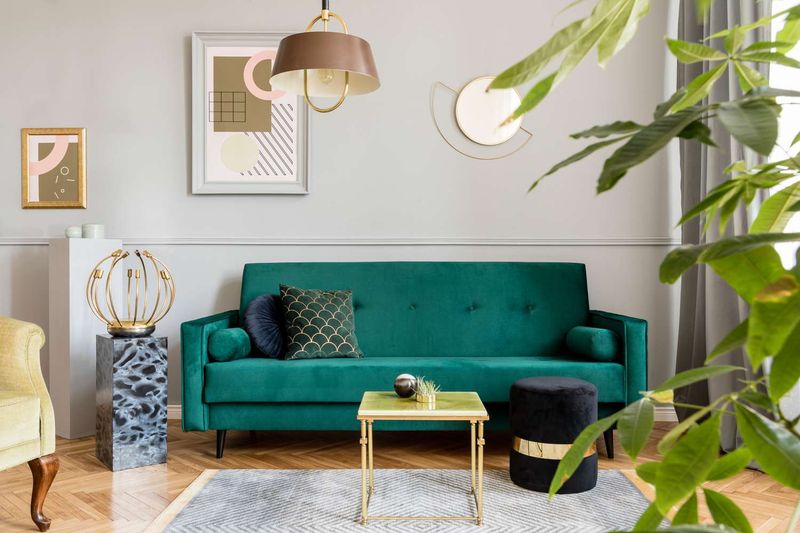
Luxurious velvet upholstery transformed living rooms and bedrooms into sumptuous retreats during the 1970s. Sofas, chairs, headboards, and even dining seats received the plush treatment in rich jewel tones like emerald green, sapphire blue, and ruby red.
The tactile quality of velvet invited touch and created visual depth through its interaction with light. Families treasured these pieces as statements of sophistication, often building entire color schemes around their velvet furnishings. The material’s sound-dampening properties even improved room acoustics.
After declining in popularity during the minimalist 1990s, velvet has made a triumphant return in contemporary interiors. Today’s versions feature improved stain-resistance and durability while maintaining the material’s characteristic luster and softness, proving that true luxury never goes completely out of style.
12. Neutral Palettes
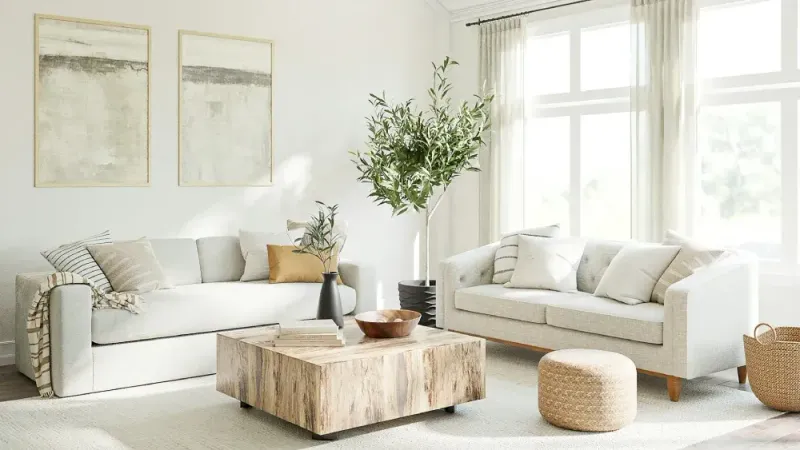
The 1990s ushered in the era of neutral domination as homeowners traded vibrant 1980s colors for softer, more subdued palettes. Beiges, taupes, soft grays, and warm whites created calming backgrounds that wouldn’t quickly date or clash with changing accessories.
This shift reflected broader cultural movements toward minimalism and simplicity. Homeowners found these versatile color schemes easier to live with long-term and more conducive to resale value. Designers layered different neutral tones to create depth without chromatic contrast. While briefly challenged by bolder color trends in the early 2000s, neutral palettes have remained remarkably resilient.
Today’s versions incorporate more complex undertones and natural materials, evolving from the sometimes flat beiges of the 1990s into richer, more sophisticated interpretations that continue to dominate contemporary interiors.
13. Quartz Countertops
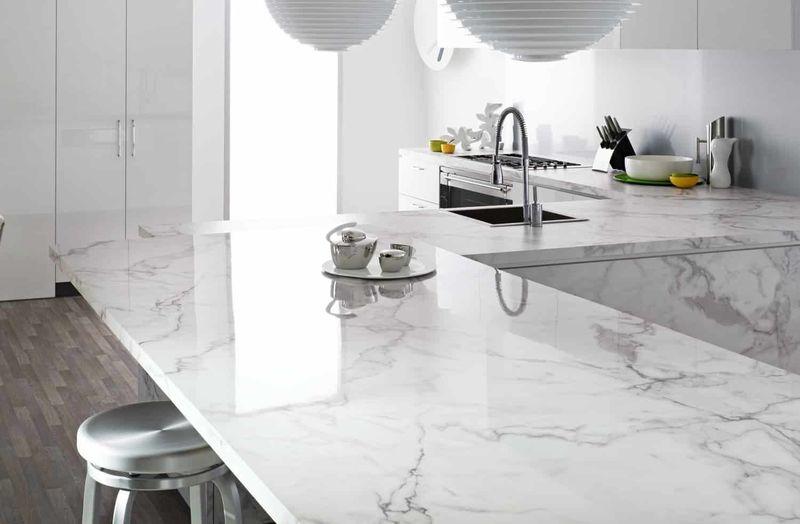
The kitchen revolution of the early 2000s brought quartz countertops into mainstream homes, challenging granite’s long-standing dominance. These engineered surfaces combined natural stone particles with resins to create non-porous, highly durable work surfaces in consistent patterns and colors.
Homeowners appreciated the practical benefits no sealing required, antimicrobial properties, and resistance to staining from wine, citrus, and cooking oils. The material’s versatility allowed manufacturers to create everything from convincing marble lookalikes to bold contemporary colors impossible in natural stone.
Quartz has continued gaining market share over two decades, evolving with improved technology that creates ever more realistic stone appearances. The material’s popularity demonstrates how modern homeowners increasingly prioritize performance alongside aesthetics, seeking beauty that doesn’t sacrifice functionality.
14. Minimalist Design
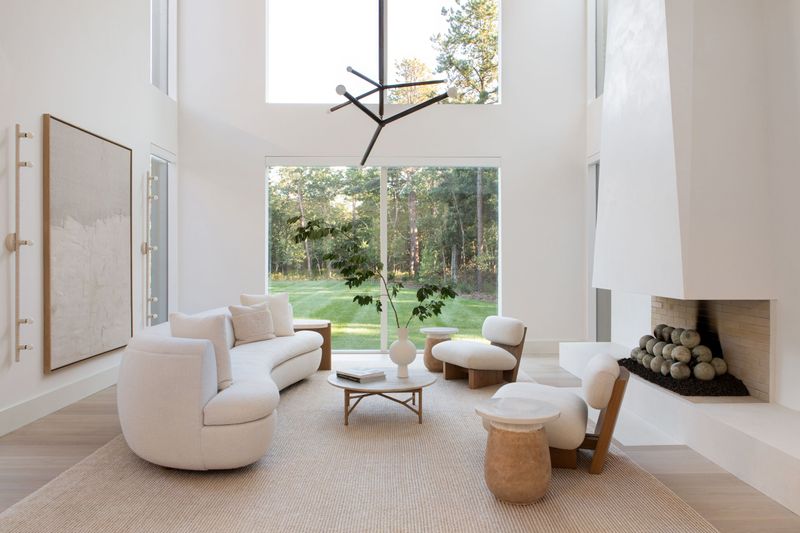
“Less is more” became the defining philosophy of home design in the early 2000s. Minimalism stripped away unnecessary ornamentation, embracing clean lines, uncluttered spaces, and carefully curated possessions that balanced form and function.
This aesthetic featured neutral color palettes, hidden storage solutions, and multi-purpose furniture that maximized increasingly smaller urban living spaces. The approach wasn’t just visual it represented a lifestyle shift away from conspicuous consumption toward intentional living. Many homeowners found the resulting spaces more peaceful and easier to maintain.
While pure minimalism has softened somewhat in recent years, its core principles continue influencing contemporary design. Today’s interpretations often incorporate more texture, natural elements, and personal touches while maintaining the clean, uncluttered feel that made minimalism so appealing in the first place.
15. Smart Home Tech
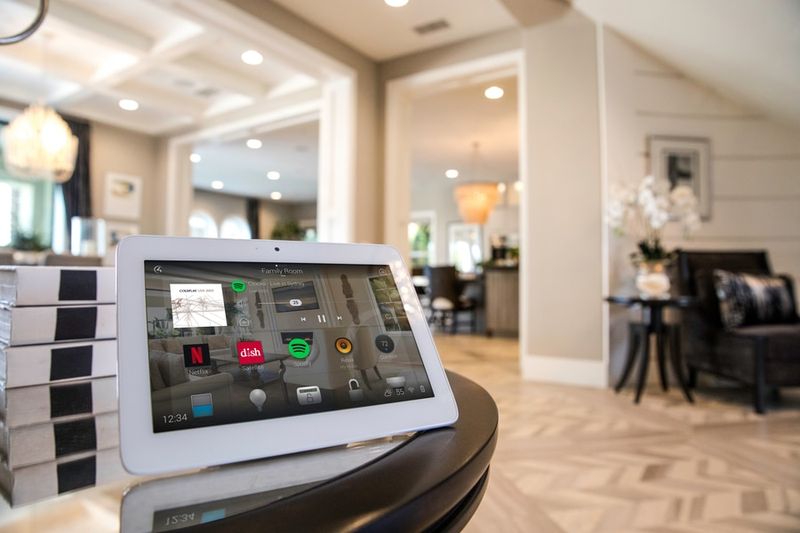
Our homes became significantly more intelligent starting in the 2010s as integrated technology transformed everyday living. Smart thermostats that learned family schedules, voice-activated assistants controlling lighting and entertainment, and doorbell cameras connecting to smartphones revolutionized how we interact with our living spaces.
Early adopters embraced these innovations for their convenience and energy-saving potential. What began as novelty quickly became mainstream as prices dropped and systems became more user-friendly. Homeowners particularly valued being able to monitor and control their homes remotely. The smart home trend continues accelerating with increasingly seamless integration.
Today’s systems offer greater interoperability between brands and enhanced privacy features, addressing early concerns while expanding capabilities to include everything from automated window coverings to smart appliances that communicate with each other.
16. Indoor Plants
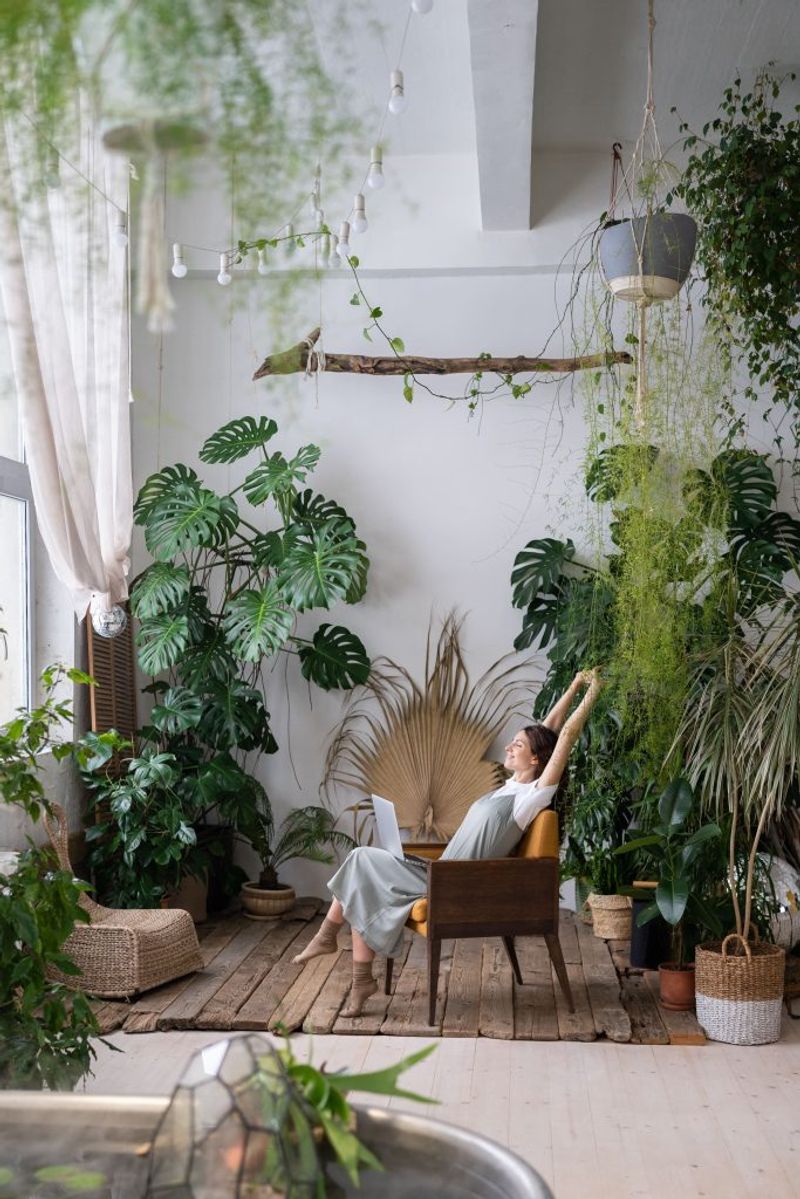
Houseplants experienced a remarkable revival beginning in the mid-2010s, transforming from occasional accents to essential design elements. This green revolution brought cascading pothos, towering fiddle leaf figs, and architectural snake plants into homes across America, often in unprecedented numbers.
Social media fueled this trend, with platforms like Instagram showcasing “plant parent” lifestyles and urban jungles. Beyond aesthetics, many embraced plants for their air-purifying qualities and the sense of nurturing they provided. The trend coincided with renewed interest in biophilic design connecting humans to nature.
Unlike the macramé-hung specimens of the 1970s, today’s plant displays feature designer pots, specialized plant lighting, and carefully curated collections of rare varieties. The pandemic further accelerated this trend as homebound individuals sought to bring life and natural elements into their increasingly important living spaces.
17. Floating Shelves
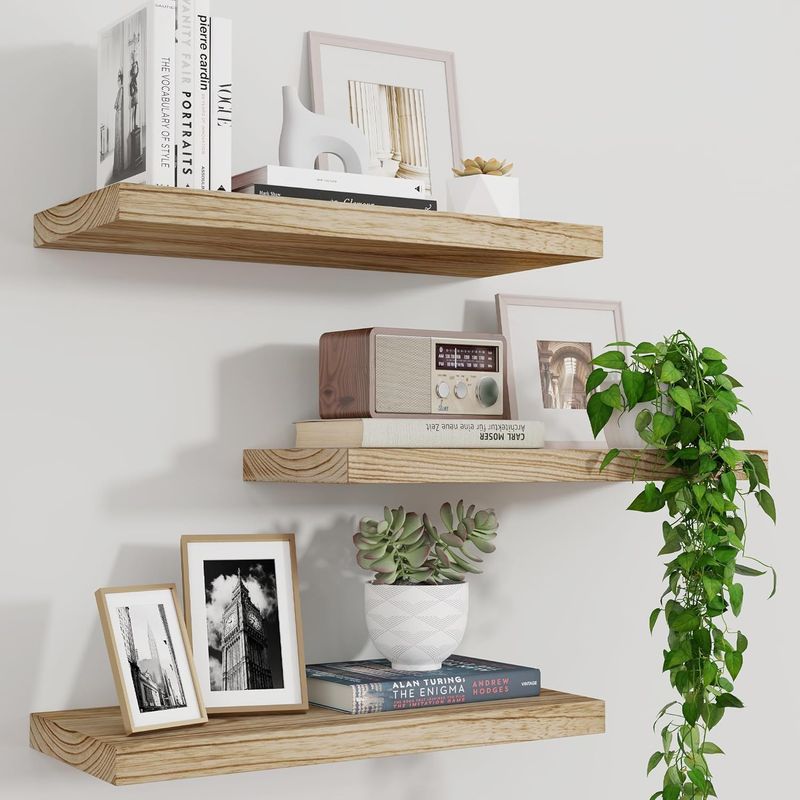
Hidden bracket systems revolutionized wall storage in the early 2000s with the popularization of floating shelves. These sleek, minimalist surfaces appeared to project directly from walls without visible supports, creating clean lines and contemporary appeal throughout homes.
Designers and homeowners embraced floating shelves for their versatility in kitchens, bathrooms, and living areas. They offered practical storage while functioning as display space for curated collections, family photos, and decorative objects. The streamlined profile worked particularly well in smaller spaces where bulkier furniture would overwhelm.
This trend has demonstrated remarkable staying power, evolving rather than disappearing. Contemporary interpretations include mixed materials like wood with metal edges, irregular organic shapes, and integrated lighting. The enduring popularity proves that sometimes the most impactful design elements are those that appear effortless.
18. Reclaimed Wood
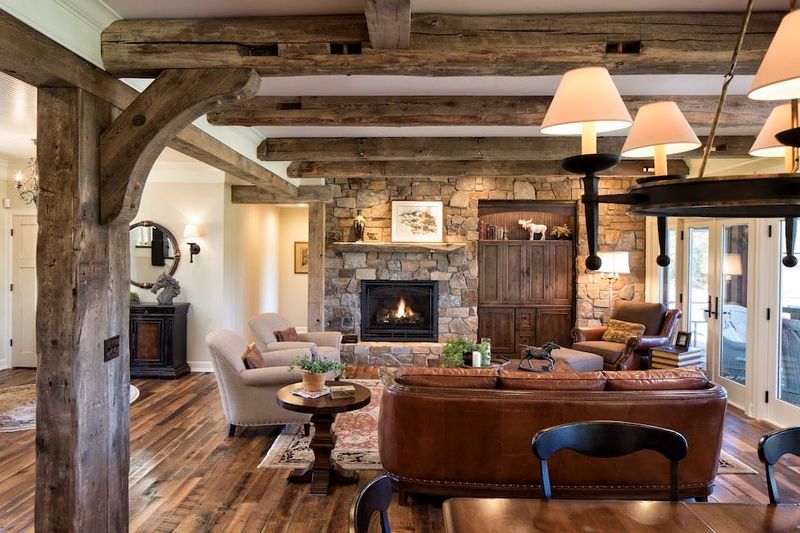
Old barns, factories, and warehouses found new life inside homes starting in the early 2000s through the reclaimed wood movement. These weathered timbers, often featuring nail holes, saw marks, and natural patina, brought authentic character and environmental benefits to contemporary interiors.
Homeowners incorporated these materials as statement floors, accent walls, ceiling beams, and furniture pieces. Each board told a story through its unique imperfections and history. The trend aligned perfectly with growing interest in sustainability and reducing construction waste.
What began as a niche interest among environmentally-conscious renovators became mainstream through retail availability and improved installation methods. Today’s applications often mix reclaimed elements with more refined materials for balance, demonstrating how this trend has matured from rustic-only applications to more sophisticated interpretations across various design styles.
19. Matte Finishes
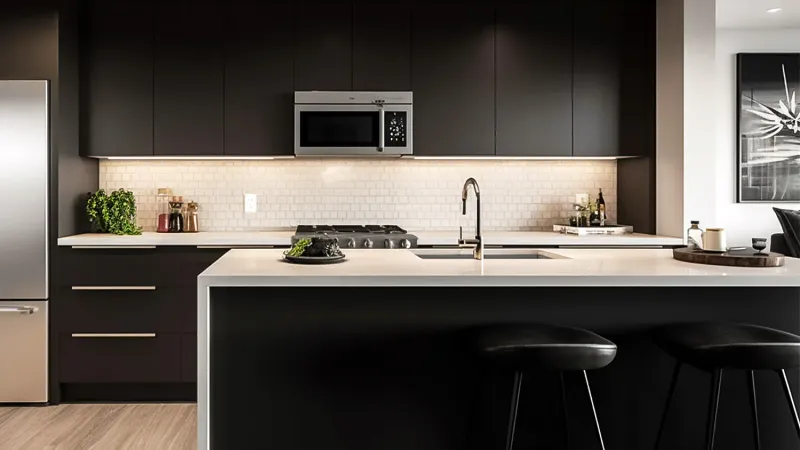
Goodbye gloss, hello sophistication! Matte finishes emerged around 2015 as the premium alternative to shiny surfaces that had dominated kitchens and bathrooms for decades. These non-reflective treatments appeared on everything from cabinetry and appliances to wall paint and plumbing fixtures.
Homeowners appreciated how matte surfaces hid fingerprints and water spots while creating a soft, sophisticated appearance. The light-absorbing quality added depth and richness to colors, making even basic shades appear more complex and intentional. Designers often mixed matte with selective glossy elements for textural contrast.
The trend continues evolving with specialized treatments like super-matte surfaces that feature fingerprint-resistant technologies. Black matte fixtures have proven particularly enduring, offering dramatic contrast in white spaces while providing a more subtle alternative to traditional chrome or nickel finishes.
20. Metallic Touches
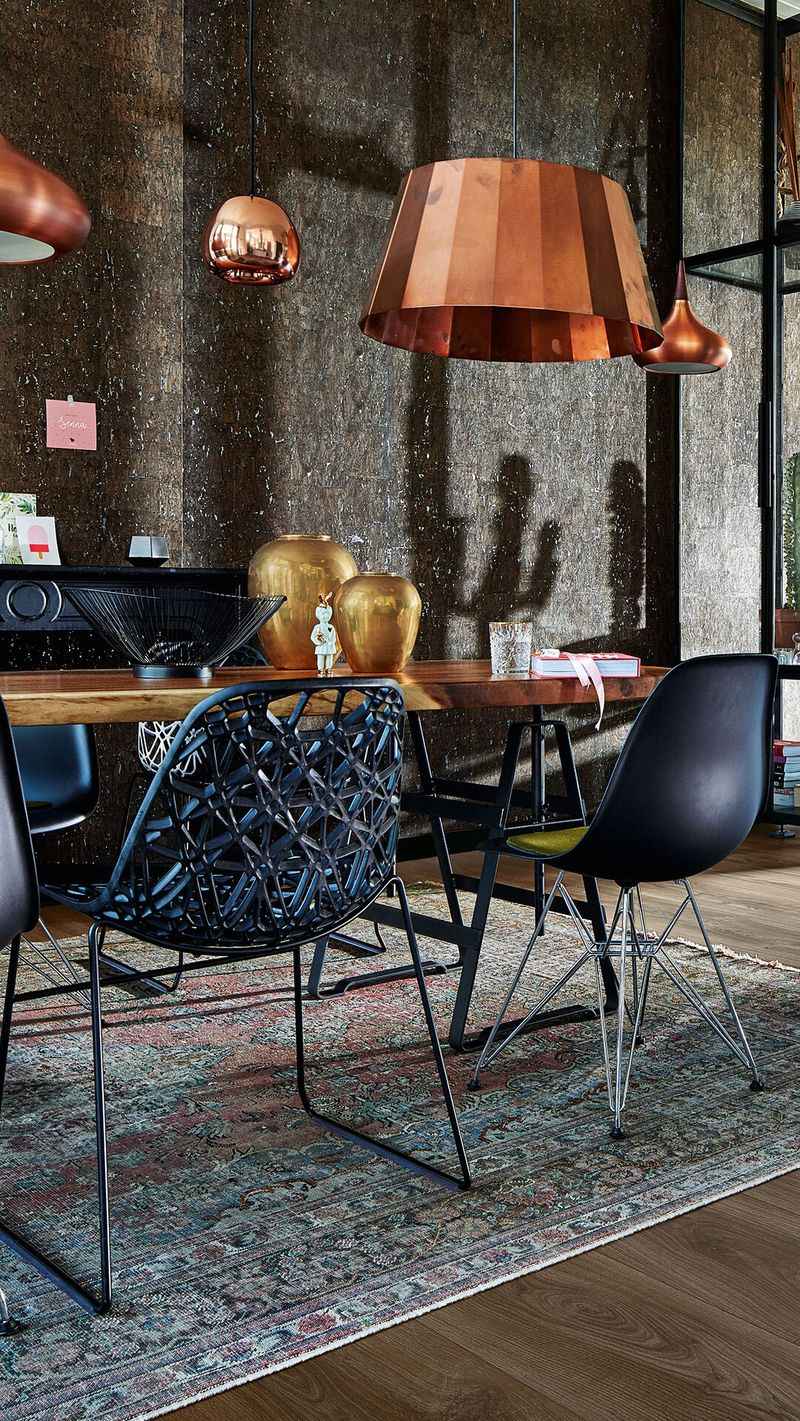
Warm metallics transformed home decor starting around 2015 when copper, brass, and gold finishes displaced the cool silvers and chromes that had dominated for decades. These radiant accents appeared in lighting fixtures, hardware, decorative objects, and even furniture details.
The shift reflected broader design movements toward warmer, more inviting interiors. Homeowners discovered how these materials added instant luxury and visual interest without major renovations. A simple swap of cabinet pulls or light fixtures could update an entire room with minimal investment.
Unlike the shiny brass of the 1980s, contemporary applications featured aged patinas, brushed finishes, and more sophisticated forms. The trend has demonstrated remarkable staying power, evolving into today’s mixed metal approaches where designers confidently combine different metallic finishes within the same space for more collected, personalized environments.
21. Geometric Patterns

Bold angles and repeating shapes redefined wall treatments and textiles around 2015 as geometric patterns surged in popularity. Hexagons, herringbone, chevrons, and abstract geometric designs appeared on everything from backsplashes and floor tiles to wallpaper and fabric.
These dynamic patterns added visual energy and movement to spaces without introducing complex imagery or themes. Homeowners particularly embraced geometric tile installations that created dramatic focal points in bathrooms and kitchens. The mathematical precision offered a pleasing order that complemented both minimalist and maximalist approaches.
While some specific patterns (like the ubiquitous chevron) have waned, geometric influence remains strong in contemporary design. Today’s applications often feature more organic interpretations with softened edges, irregular repetitions, and nature-inspired variations that maintain visual interest while feeling less rigid than earlier iterations.
22. Bold Color Accents
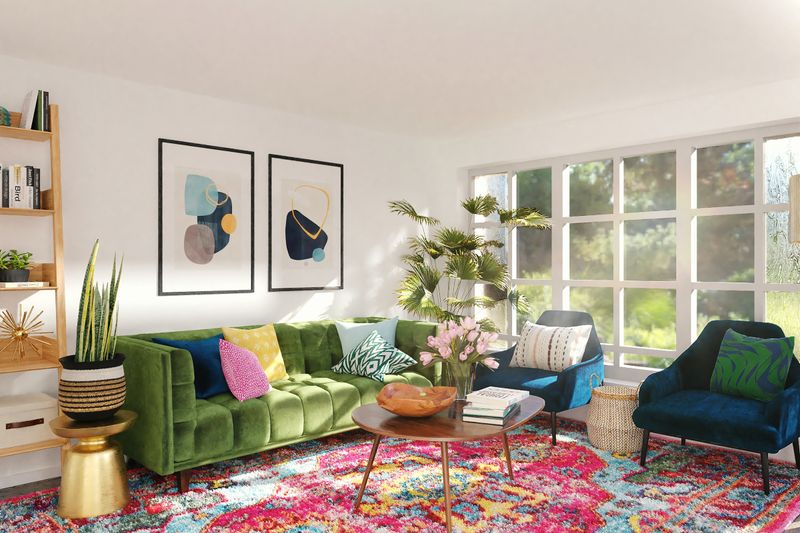
Vibrant pops of color revolutionized neutral-dominated spaces around 2018, injecting personality without overwhelming commitment. Strategic color placement through accent walls, furniture pieces, artwork, and accessories energized rooms while maintaining design flexibility.
Jewel tones like emerald green, sapphire blue, and amethyst purple led this movement, offering rich, sophisticated alternatives to primary colors. Homeowners appreciated how these targeted color moments created focal points and visual pathways through spaces. The approach proved particularly popular with renters and those hesitant to make permanent color commitments.
This technique continues evolving with current preferences for deeper, more complex colors with gray or brown undertones rather than pure brights. The strategic accent approach demonstrates how contemporary design increasingly embraces personalization and expression while maintaining the practical benefits of predominantly neutral backgrounds.
23. Mixed Metals
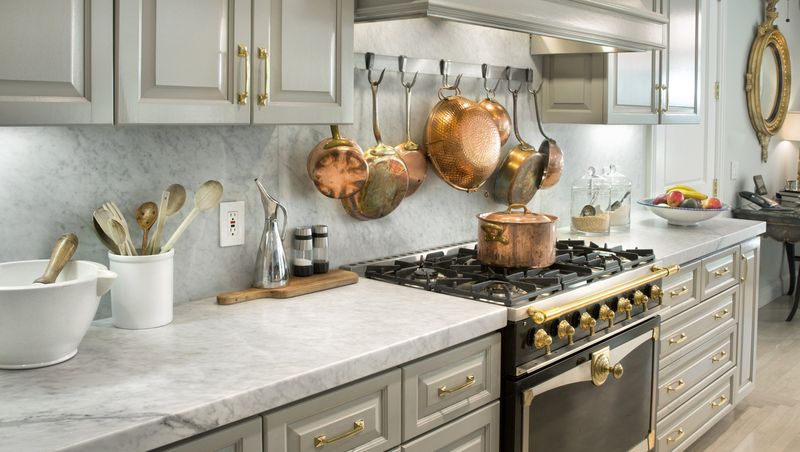
Design rules were made to be broken! Around 2018, interior designers challenged the long-standing convention that all metal finishes in a room should match. This liberation allowed homeowners to combine brass lighting with stainless appliances, black faucets with gold hardware, and copper accessories with chrome details.
The mixed metals approach created more collected, evolved spaces that appeared to develop over time rather than being purchased as matching sets. Designers discovered that contrasting metals added depth and visual interest similar to how artists use different textures in paintings.
Many homeowners found this approach more forgiving when renovating in phases. The trend continues gaining momentum with increasingly confident combinations. Today’s designers often recommend unifying mixed metals through consistent undertones (warm or cool) or establishing a dominant metal with secondary accents for more cohesive results.
24. Textured Fabrics
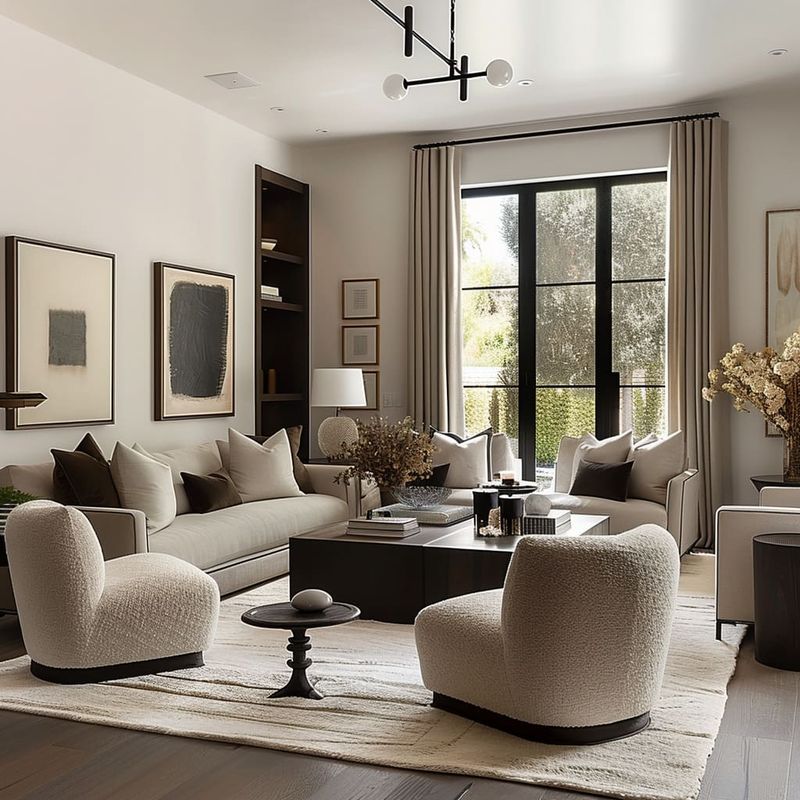
Tactile experiences became central to interior design around 2019 as visual-focused minimalism evolved into more sensory-rich environments. Bouclé, sherpa, tweed, and performance velvet upholstery transformed furniture into touchable sculptures that invited physical interaction beyond mere functionality.
This movement responded to growing screen time and digital living by emphasizing physical, real-world experiences. Homeowners layered different textures through pillows, throws, rugs, and upholstery to create more dynamic, inviting spaces.
The approach worked across design styles from contemporary to traditional. Neutral colors often showcased these textures, allowing subtle variations in weave, pile, and pattern to create interest without busy visuals. Today’s textural focus continues expanding with renewed interest in natural materials like linen and wool alongside innovative performance fabrics that combine luxurious feel with practical durability for real-life living.
25. Farmhouse Style
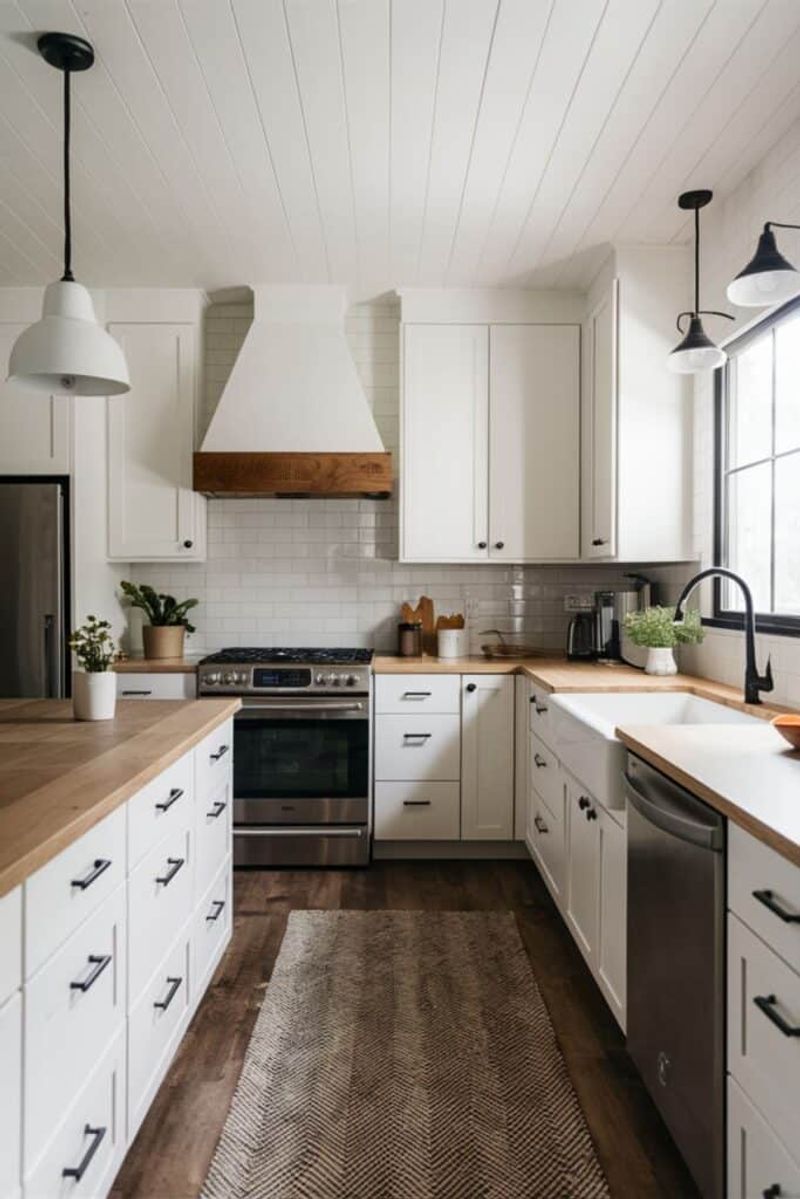
Shiplap, barn doors, and apron sinks transformed suburban homes into rustic retreats during the farmhouse style explosion of the mid-2010s. This wildly popular aesthetic, propelled by television shows like “Fixer Upper,” combined practical features with nostalgic elements that referenced simpler times. Homeowners embraced the style’s accessible DIY potential and family-friendly durability.
White-dominated color schemes with black accents created a crisp backdrop for natural wood elements and vintage-inspired accessories. The look’s casual, collected nature felt attainable and unpretentious compared to more formal design approaches.
While pure farmhouse has evolved toward more refined “modern farmhouse” interpretations with fewer literal rural references, its influence remains significant. Key elements like mixed wood tones, vintage-inspired lighting, and prioritizing comfort over formality continue shaping how many Americans approach home design today.
26. Mid-Century Modern
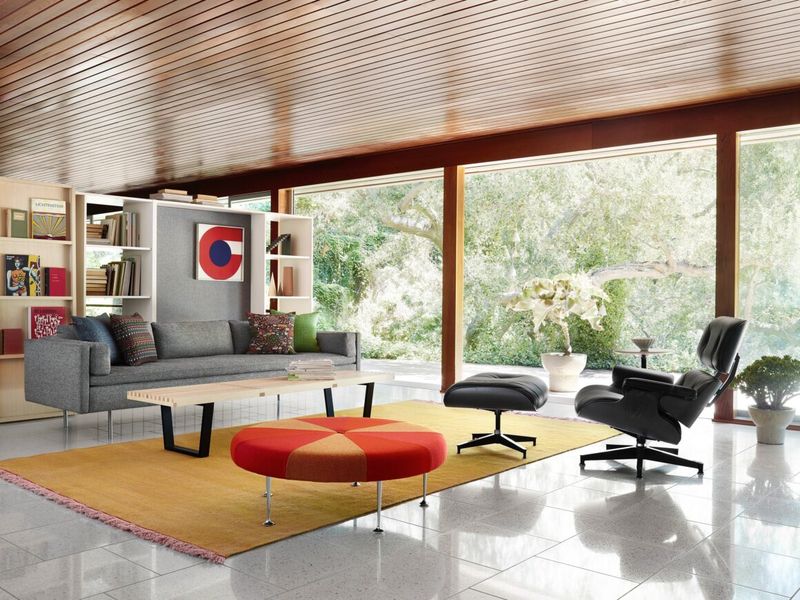
The sleek lines and organic curves of 1950s and 60s design found new audiences in the 2010s as mid-century modern style experienced a remarkable revival. Tapered furniture legs, atomic-inspired patterns, and functional minimalism captured imaginations across generations. This resurgence connected to both nostalgic appreciation and practical benefits.
The style’s clean-lined furniture scaled perfectly for smaller urban spaces. Original vintage pieces became coveted investments, while mainstream retailers created affordable reproductions that made the look accessible to broader audiences.
Television shows like “Mad Men” further popularized the aesthetic, creating cultural touchpoints that extended beyond design enthusiasts. Today’s applications typically blend authentic mid-century elements with contemporary pieces rather than creating period-perfect rooms, demonstrating how this influential style continues evolving while maintaining its distinctive character and enduring appeal.
27. Industrial Style
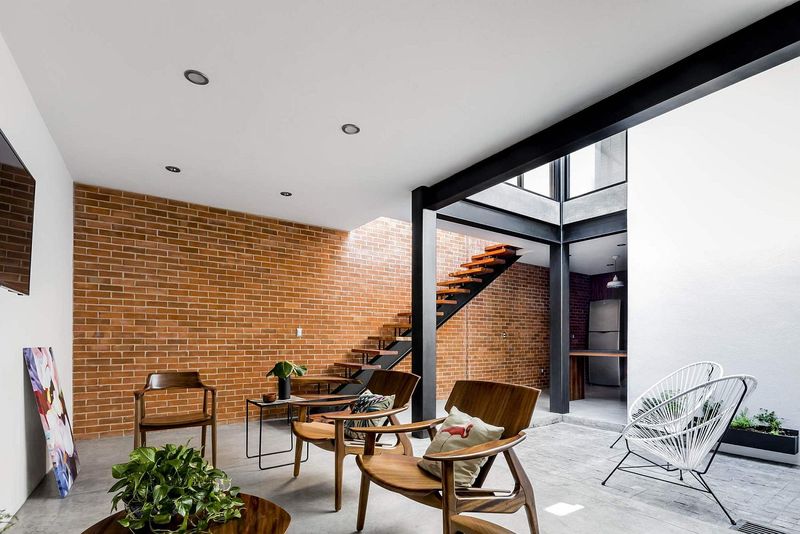
Factory features found their way into residential spaces during the 2010s as industrial style transformed utilitarian elements into desirable design features. Exposed brick, metal pipes, concrete surfaces, and warehouse-inspired lighting created raw, authentic environments that celebrated structural elements typically hidden in conventional homes.
This trend gained momentum alongside urban renewal projects converting former manufacturing spaces into residential lofts. Even suburban homes incorporated industrial touches through lighting fixtures, furniture with visible mechanisms, and materials like reclaimed wood paired with blackened steel. The style’s honest materiality and functional focus appealed to those seeking alternatives to more decorated approaches.
Contemporary interpretations have softened somewhat, incorporating more comfortable elements while maintaining industrial touchpoints. Today’s “warm industrial” blends factory-inspired features with natural textures, warmer colors, and more residential comforts for spaces that feel both authentic and inviting.
28. Boho Chic
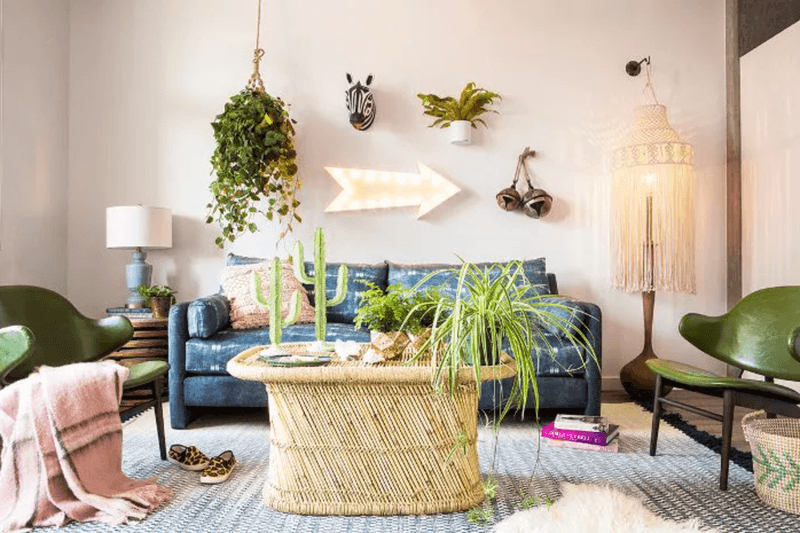
Free-spirited and eclectic, Bohemian-inspired interiors surged in popularity during the mid-2010s as a reaction against more structured design approaches. This carefree style mixed patterns, textures, and global influences with abundant plants and handcrafted elements to create uniquely personal spaces. Macramé wall hangings, Moroccan rugs, floor cushions, and collected treasures from travels defined this look.
Homeowners appreciated how the style celebrated imperfection and individuality rather than showroom perfection. The approach encouraged sustainable practices through vintage shopping, artisanal purchases, and repurposing existing items.
Today’s boho has evolved toward more curated interpretations that maintain the style’s eclectic spirit with greater color cohesion and intentional editing. The enduring influence demonstrates how contemporary design increasingly values personal expression and authenticity over strictly following trends or design rules.
29. Sustainable Materials
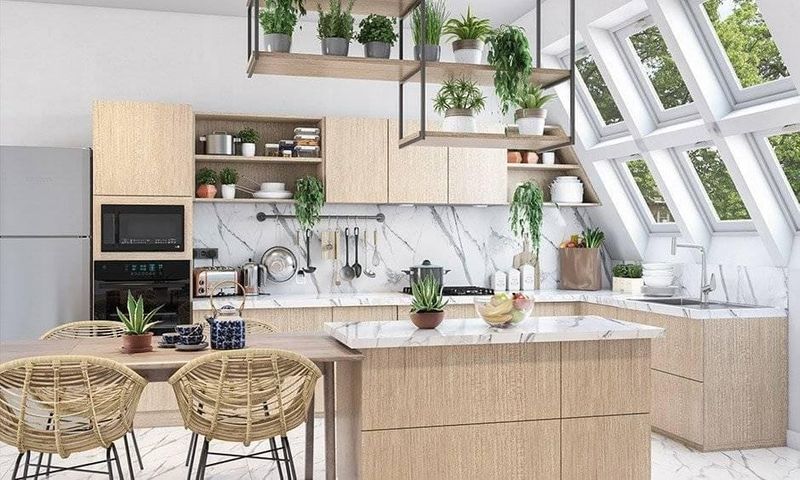
Environmental consciousness transformed home design in the late 2010s as sustainable materials moved from niche interest to mainstream priority. Bamboo flooring, recycled glass countertops, low-VOC paints, and energy-efficient systems became selling points rather than afterthoughts. Homeowners increasingly considered the full lifecycle impact of their design choices, from raw material sourcing to eventual disposal.
This shift reflected growing awareness of climate issues and indoor air quality concerns. Manufacturers responded by developing innovative alternatives to traditional materials and improving transparency about environmental impacts. The movement continues gaining momentum with biophilic design approaches that incorporate nature-inspired elements alongside actual sustainable materials.
Today’s eco-conscious design increasingly focuses on creating healthy living environments that benefit both residents and the planet through responsible material selection, energy efficiency, and waste reduction.
30. Maximalism
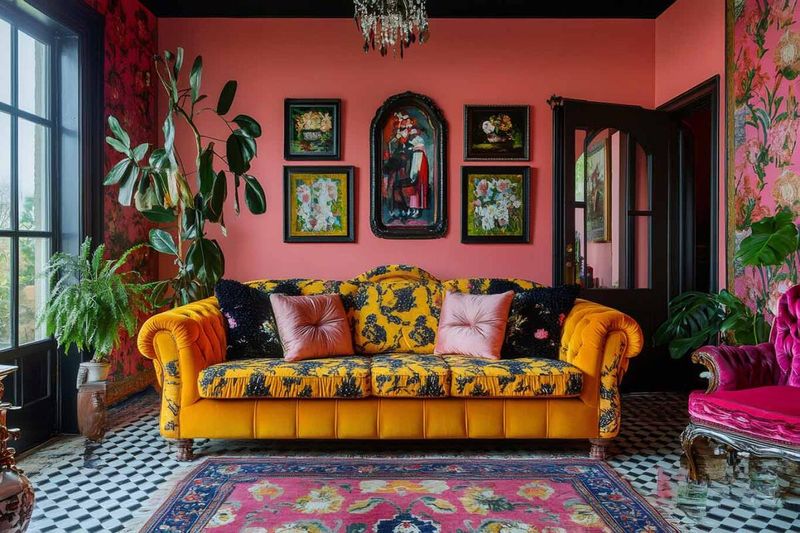
More became more again around 2018 as maximalism challenged minimalism’s long dominance. This exuberant approach embraced pattern mixing, color layering, collections display, and visual abundance to create richly personal spaces that reflected individual personalities and stories.
Gallery walls expanded beyond simple photo arrangements to include diverse art forms, vintage finds, and meaningful objects. Wallpaper returned with bold patterns often covering all four walls rather than just accents. Maximalist spaces celebrated the beauty of thoughtfully arranged abundance rather than strict editing.
This movement connected to broader cultural shifts toward authenticity and self-expression in the digital age. Today’s maximalism continues evolving with greater emphasis on intentional curation rather than simple accumulation. The approach demonstrates how contemporary design increasingly values personal meaning and emotional connection alongside aesthetic considerations.
31. Neutral Tones
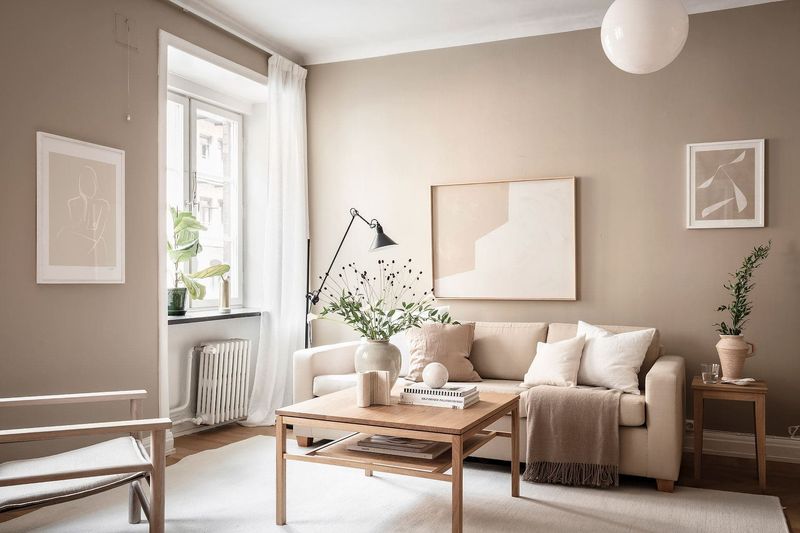
Beige made a sophisticated comeback around 2019 as warm neutrals displaced the cool grays that had dominated the previous decade. These nuanced earth tones including taupe, camel, oatmeal, and greige created serene backgrounds that connected to growing biophilic design influences.
Unlike the flat beiges of the 1990s, today’s neutrals feature complex undertones and are often paired with natural materials and textures for depth. Homeowners appreciate how these versatile backdrops accommodate changing accent colors and personal items. The palette works equally well across design styles from contemporary to traditional. This shift reflects broader movements toward creating calming home environments in increasingly chaotic times.
The warmth these colors provide feels both grounding and comforting while maintaining the practical benefits of neutral backgrounds. Their enduring appeal suggests neutrals aren’t just a fallback choice but a sophisticated design decision.

